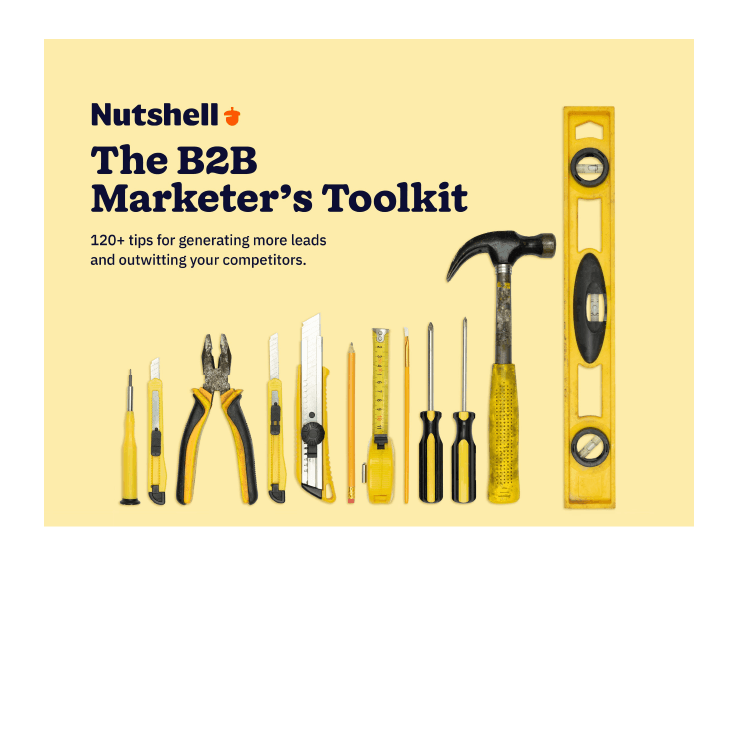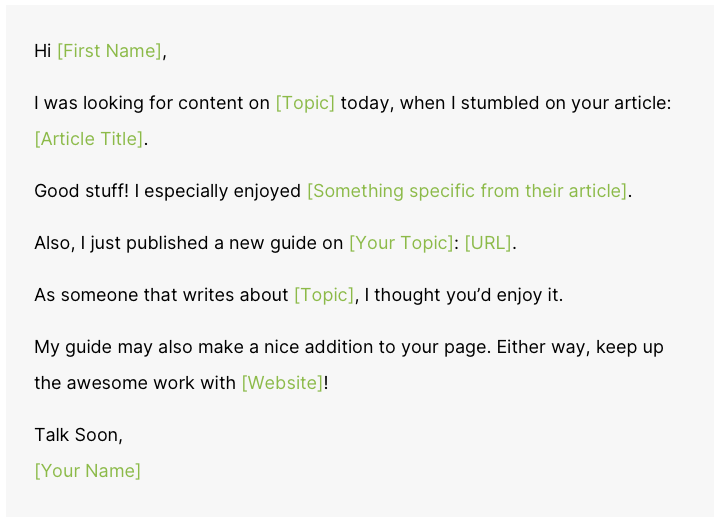
If you’re looking to grow your organic traffic and SEO, your strategy must include some form of link building. Even marketers on a budget can still achieve tremendous results, as link building done correctly will indicate to search engines that your site is just as highly-ranked as the sites that link to it.
Link building is a pillar of SEO. Without quality links, don’t rank on search engines, and thus organic traffic remains low too.
With that in mind, we’ve created this beginner’s guide to link building for you! Keep reading to learn what link building is, why it’s important, what a quality link looks like, and five link building techniques you can use to build a robust backlink portfolio.
Before we can define link building, we need to take a moment to understand what links are.
An inbound link, often referred to as a backlink or external link, is an HTML hyperlink that transports internet users from one website to another. In the wise words of Moz, inbound links are the “currency of the internet” because they help define your site’s reputation.
Link building is the process of generating hyperlinks that point to your own website. There are many ways to do this, which we’ll discuss in a later section of this article. But first…
What’s the big deal? It’s just a link, right? The internet has billions (trillions?) of them…
The truth is, links are incredibly important to your site’s SEO because they signal to search engines that your site is reputable, and in the search engines in turn will drive targeted traffic to your content for free.
Search engines rely on links to determine the quality of a web page. For instance, if only spam websites link to your site (toxic backlinks), search engines will think your site is spam as well, and your rank on search engines will be atrocious.
Links also help search engines rank content in search results. Have you ever wondered why Google displays some web pages and not others when you type a query into its search bar? It’s because Google decided those specific web pages provide trustworthy answers.
See also: How to write SEO content.
“Okay,” you’re thinking, “But how does Google determine trustworthiness?”
There are many factors search engines like Google evaluate when determining the reliability of a page, but links are definitely one of them. Google figures that if a bunch of reputable sites are linking to a specific piece of content, there must be a good reason.
Links can also help you drive targeted traffic to your website.
Let’s say you’re reading content on the Nutshell blog. You’re blown away by the quality of our writing and think to yourself, “Man, if only Nutshell wrote about [Topic]. I’d definitely read that!”
Suddenly, you notice a bit of orange text signifying a link to the exact content you’re interested in. You click on it immediately. After all, your favorite content creators (Nutshell) linked to the post so it must be valuable, right?
Now you’re on a website you’ve never visited before, reading a blog post about a topic you’re highly interested in. As long as the post is well-written, there’s a good chance you’ll check out the company who wrote it, peruse their website, download a free ebook…
This is what we mean by targeted traffic. By acquiring backlinks, you can drive traffic to your website that’s already interested in what you have to say and offer.
The B2B Marketer’s Toolkit collects 120+ of the best lead generation tips ever published on the Nutshell blog. Download it today!

Here’s the thing: not all links are created equal. In fact, links from unreputable websites can actually harm your SEO efforts. So the question is, what does a quality link look like?
Quality, in our opinion, comes down to three things: trust, range, and relevance.
When building a strong backlink portfolio for your site, you need to acquire links from a wide range of trusted website types, whose anchor text reflects your linked content.
A strong backlink portfolio is like a first-class ticket to the top of Google’s search results. But how do you actually acquire quality links? Start with these five link building techniques!
Mr. Bill Gates called it way back in 1996 when he wrote “Content is King“. To acquire links, start by creating amazing content that people will actually want to link to.
Now, amazing content comes in a variety of flavors…
For example, you can create visual assets like diagrams, infographics, and memes, which often work well because they’re super easy for internet users to link to.
You can also write in-depth blog posts, ultimate guides, and original research papers for your website. These content types are popular because they’re highly valuable to readers and don’t cost any money to produce, assuming you can write the content in-house.
What about video content? Yup, videos can be used to build links, too! According to Google, 60% of people would rather watch online videos than TV, making video marketing a fantastic way to promote a website and earn backlinks.
There’s no shortage of content types you can use to build a rock solid link portfolio. The trick is creating the kind of valuable content that your target audience actually wants.
Don’t skimp on this as the success of your link building efforts largely depends on your ability to craft amazing stuff for the world to read, watch, listen to, or otherwise consume.
Quality content is essential, but you need more than just great blogs and videos to build a stellar backlink portfolio. If you want to make your competitors green with envy at the astonishing number of links your website has, you need to promote your content.
The internet is a crowded place. More than 4.4 million blog posts are published on a daily basis and 300+ hours of footage are uploaded to YouTube every minute.
It doesn’t matter how amazing your content is, without a little promotion, no one will ever see it, let alone link to it. There’s too much stuff already on the web. Fortunately, there’s a perfectly straightforward way to market your content: reach out to influencers.
By connecting with folks who have an audience that resembles yours and giving them a compelling reason to link to/share your latest creation, you’ll be able to build links quickly.
Here’s the oversimplified three-step process for influencer outreach:
Brian Dean, the SEO wizard over at Backlinko, recommends the following script when reaching out for links. Just customize it to your recipient and hit send!

To acquire a significant number of links, you’re going to need to reach out to a significant number of people, which can easily get out of hand. Fortunately, a CRM like Nutshell can simplify the process by giving you top-notch organization tools.
We suggest adding all of the influencers you contact to your CRM so you can easily keep track of them and their responses. Nutshell’s very own Jack Virag organized his link outreach inside his CRM and boosted organic traffic by 11%!
A broken link is exactly what it sounds like: a link that no longer works.
As it turns out, the internet is full of broken links, which is awesome news for all aspiring link builders. Why? Because it will allow you to contact an influencer or site owner, notify them about the broken link, and suggest your piece of content as a replacement.
Here’s how broken link building works:
This process is pretty simple once you get the hang of it, though it does take time and isn’t always successful. In fact, you’ll likely only achieve a 5-10% success rate with this tactic. But if you contact enough sites, the backlinks will start to pile up!
Just because you score a new backlink doesn’t mean you’ll have it forever. Unfortunately, important backlinks can disappear at any time due to a variety of reasons. Hey, nobody said SEO was easy… The good news is, you can work to reclaim lost backlinks!
Obviously, the three steps listed above are just a general outline for reclaiming backlinks. We suggest reading this link reclamation guide for in-depth details.
The final link building technique we’ll mention is content syndication.
Content syndication is the practice of publishing a piece of content on multiple websites. If every site that posts your blog, for example, links back to your website, you can quickly add multiple links to your backlink portfolio in a single go.
Just to be clear, content syndication is not the same as guest blogging, which is when you create a new post for a website other than your own. (Note: guest blogging can help you build backlinks, too, as long as you’re allowed to link to content on your website in the blog.)
Now that we have definitions out of the way, let’s talk about how to syndicate your content.
The first step is to create amazing content. We told you this would be a recurring theme, didn’t we? If your content sucks, why would anyone want to republish it on their own site? Do the work, make something awesome, then try to get it republished.
Next, find websites that might want your content. A no-cost way to do this is to simply type phrases like “Republished With Permission” + “The Topic of Your Article” into Google and sift through the results.
When you find potential republishers, reach out to them with a respectful email that clearly explains the value they will receive by posting your work.
We should also mention that it’s totally possible to syndicate your own content by republishing it on sites like Medium, Reddit, and LinkedIn.
If you create great content that people want to link to and share, you’ll naturally acquire toxic backlinks. A toxic backlink is any link that does more harm to your SEO efforts than good. Fortunately, Google allows you to disavow these links so you aren’t penalized for them.
Tools like SEMrush allow you to export a .csv file of each and every toxic backlink connected to your site. You can then use Google Search Console to disavow them. Here’s how:
And that’s all there is to it! While Google suggests trying to remove poor links yourself, this is a viable alternative that will allow you to save your link building efforts.
Quality backlinks will empower your business and allow you to hit the top of Google search results, driving quality traffic to your website on autopilot. To build a strong link portfolio, simply implement the five techniques listed in this article:



Join 30,000+ other sales and marketing professionals. Subscribe to our Sell to Win newsletter!